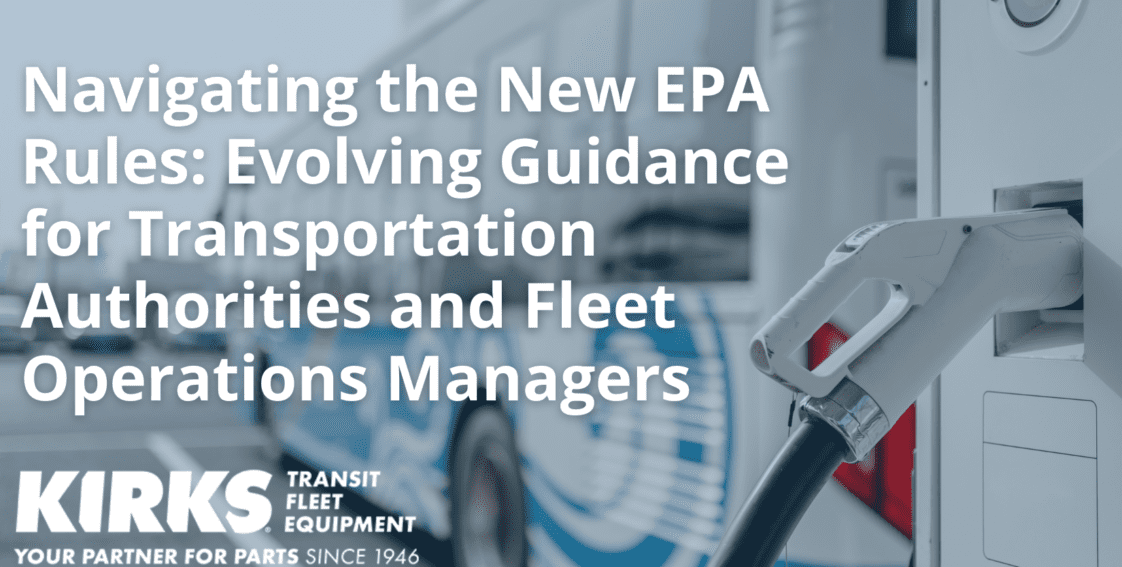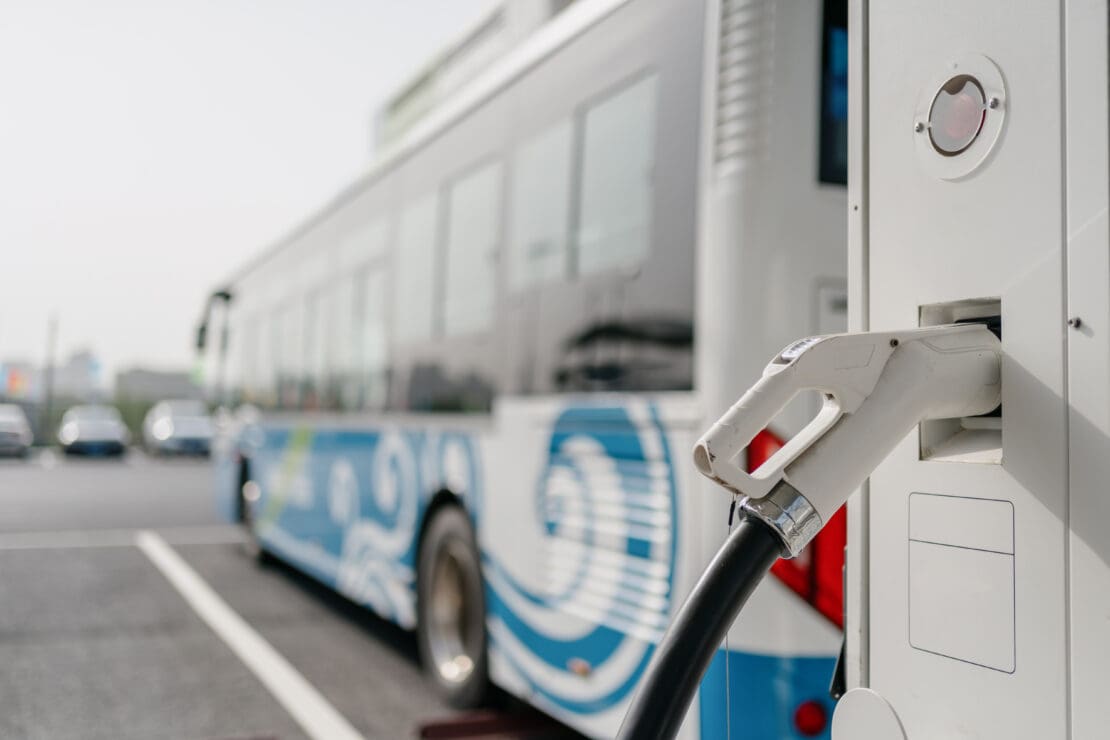
Navigating the New EPA Rules: Evolving Guidance for Transportation Authorities and Fleet Operations Managers
The Environmental Protection Agency (EPA) finalized strict emissions rules targeting the public and commercial heavy-duty vehicle sectors in March 2024.
Transit authorities and fleet managers must adjust to the new 2027 emissions regulations, effective from that model year through 2032. This article provides practical guidance for navigating the changes.
Why Heavy-Duty Vehicles are in the EPA’s Crosshairs
- Amount of Pollution Produced: According to the EPA, the transportation sector is the largest contributor to climate-warming pollution in the United States. In 2021, it accounted for 28% of the nation’s “carbon footprint.”
- Unmet Global Commitments: Addressing emissions from this sector is crucial to the U.S.’s fulfillment of its Paris Agreement commitments.
Understanding the New Regulations
- Scope of Impact: This regulation affects more than 100 vehicle types. It limits truck pollution and allows manufacturers to choose compliance technology. Diesel engines are not going away.
- Stages of Implementation: Emission targets for 2025 remain unchanged, but those in later years rise steeply. Permitted emissions reductions beginning in 2027 and continuing through 2032 will occur.
- Projected Environmental Impact: The EPA projects that 25% of new long-haul trucks and 40% of medium-duty trucks could be nonpolluting by 2032, compared to only 2% today. This rule provides a 60% improvement for light and 40% for medium heavy-duty vocational vehicles and day cab tractors.
The EPA’s Objective of Stricter Emissions Rules
The EPA rules encourage transportation executives to speed up the change to cleaner, zero-emission vehicle technologies. They claim to provide regulatory certainty, affordable solutions, health benefits, and “environmental justice.”
These expected benefits, however, are not without industry pushback.

Transportation Industry Executives Voice Doubt and Concerns
While EPA rules aim to reduce emissions and promote cleaner transportation, industry leaders’ concerns regarding the aggressive new regulations are meaningful and warrant careful consideration.
- Operational Challenges in Emission Compliance: American Trucking Association (ATA) President Chris Spear expressed concern about the ambitious targets, particularly in the post-2030 period. Spear emphasized “the need for realistic and durable targets that align with the current state of zero-emission technology.”
- Unexpected Consequences: American Bus Association (ABA) President and CEO Peter Pantuso called for a realistic approach to the new regulations. “Forcing the transportation sector to switch to electric vehicles (EVs) without considering the totality of what’s involved makes no sense,” he stated.
- Challenges in EV Infrastructure Development: Other transportation industry leaders point out that the existing infrastructure still needs significant improvement before the EV transition can succeed. Further, existing batteries do not yet enable large loads to travel long distances.
Bridging the gaps between the needs of vehicle manufacturers, parts suppliers, operators, and regulators will be essential to ensure a smooth and successful transition.
Early Adopters of Clean Transportation Solutions Already Moved Forward
Many organizations expected these new standards and began transitioning to zero-emission vehicles (ZEV). Models include battery-electric, alternative fuel, and hydrogen fuel cell vehicles. Some are investing in charging and fuel infrastructure to support these new vehicle technologies.
Proactive Planning Enables Transportation Executives to Continue Leading Effectively
The rules mandate the adoption of more advanced emissions control technologies. Improved onboard diagnostics and selective catalytic reduction systems (SCR) may be partial solutions.
Proactive planning by leaders, combined with coordinated procurement and buildout of charging infrastructure, is critical to reducing costs while accelerating compliance efforts. Here are some tips for the near term:
- Strategic Procurement: Develop a multi-year strategy aligned with regulatory phase-ins for a smoother transition.
- Analyze fleet age, composition, and replacement cycles to forecast needs within the model year phase-in periods.
- Develop a multi-year plan to transition the fleet to meet tightening emissions limits.
- Prioritize and accelerate replacing older, higher-emitting vehicles first with newer technologies, including ZEVs.
- Leverage available Federal funding to offset transition costs.
- Inventory Management: Enhance parts inventory practices for critical emissions components to ensure availability and control costs.
- Confirm replacements will be available for catalytic converters, particulate filters, diesel exhaust fluid (DEF) dosing and supply modules, alternative fuel ignition systems, and other parts, including exhaust gas recirculation (EGR) coolers. Consider multi-year supply contracts for critical emissions parts.
- Consider demand volatility, replenishment lead time, variability in lead times, costs, and supplier delivery reliability. Build inventory buffers where needed.
- Explore remanufactured options to diversify your supply chain and enhance the availability of needed parts. KIRKS partners with our fleet and transit customers to provide in-house, customized remanufacturing services tailored to their specific needs.
- Consider purchasing new vehicle extended service contracts directly from Original Equipment Manufacturers (OEMs) covering emissions components.
Implementing these strategies can minimize issues with parts availability until vehicles are upgraded or replaced.
The Road Ahead Post-2027
Buyers may face a “seller’s market” as the clock ticks toward 2030 and demand rises for new equipment and replacement parts. Increased costs faced by transit authorities and fleet managers, beginning now and continuing for years, may include:
- Vehicle Investment: Heavy-duty bus and fleet owners must develop a path toward a much higher proportion of zero-emission vehicles, such as battery-electric or alternative fuel vehicles.
- Energy Source: Given the possibility of inadequate public facilities, organizations may need to make further investments in charging or fuel infrastructure.
- Maintenance and Training: Transportation staff will need training on maintaining and operating new or enhanced ZEV technologies. The training should also cover provisions for preventing emissions control tampering.
More extended warranties for equipment, less maintenance and fuel usage, and the availability of Federal financial support may offset some of the increased costs.
KIRKS is Here to Meet Your Needs for Transit and Heavy-Duty Replacement Parts
KIRKS provides emission control solutions and expert advice for heavy-duty fleets transitioning to cleaner technologies. Contact us here, email us at sales@kirks.com, or call (313) 933-7030 to speak with a specialist about new or Approved Equal Replacement Parts.
